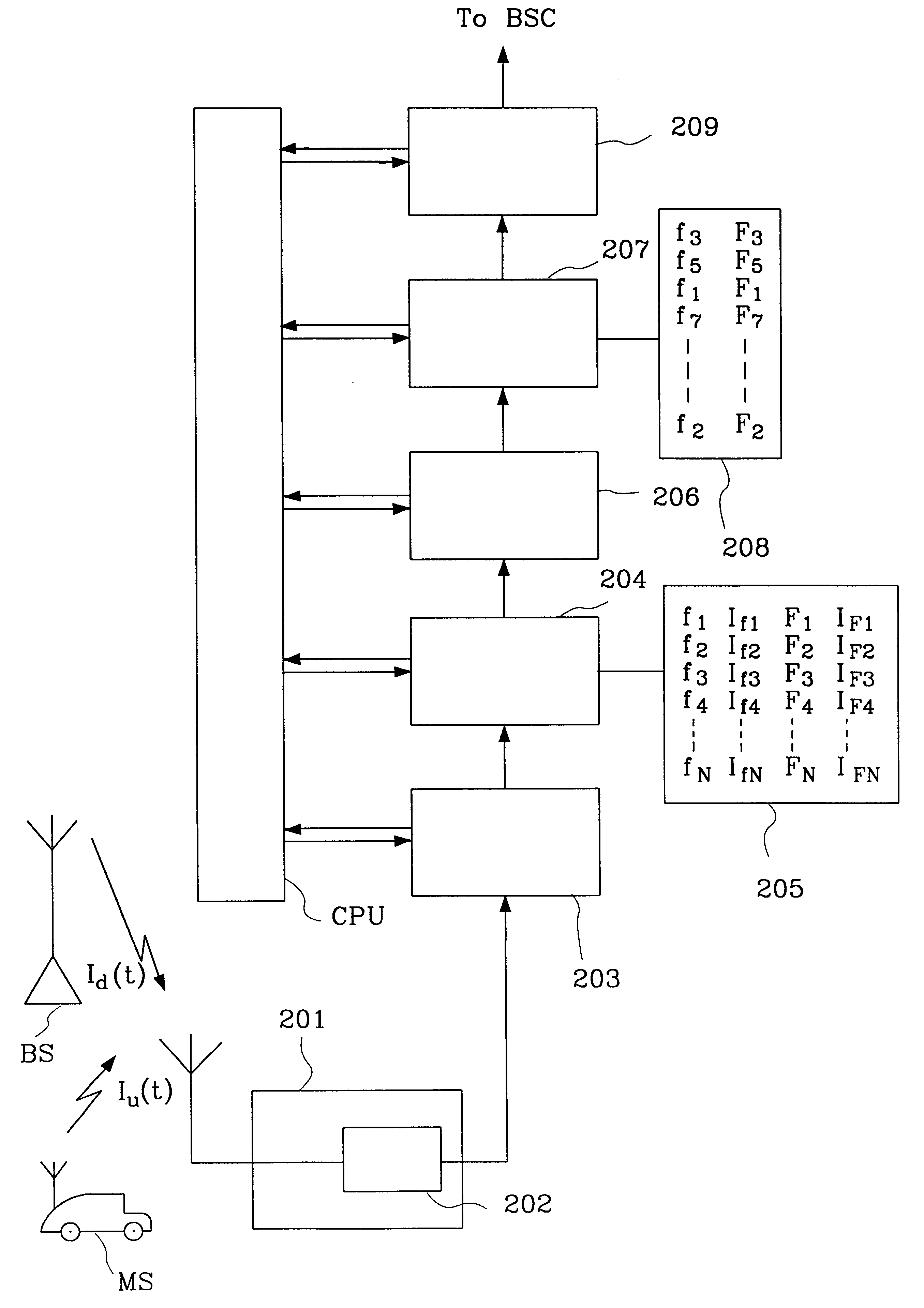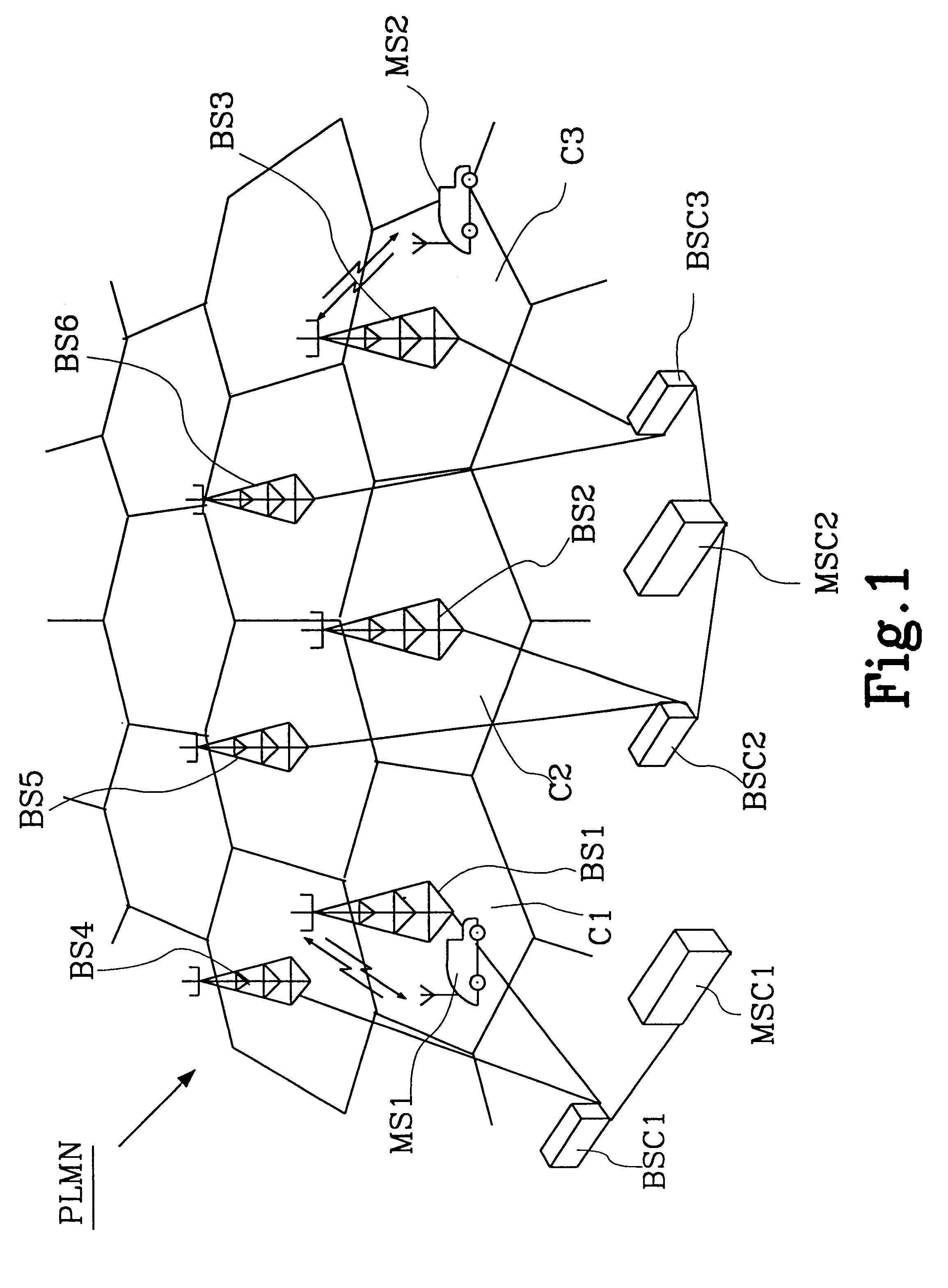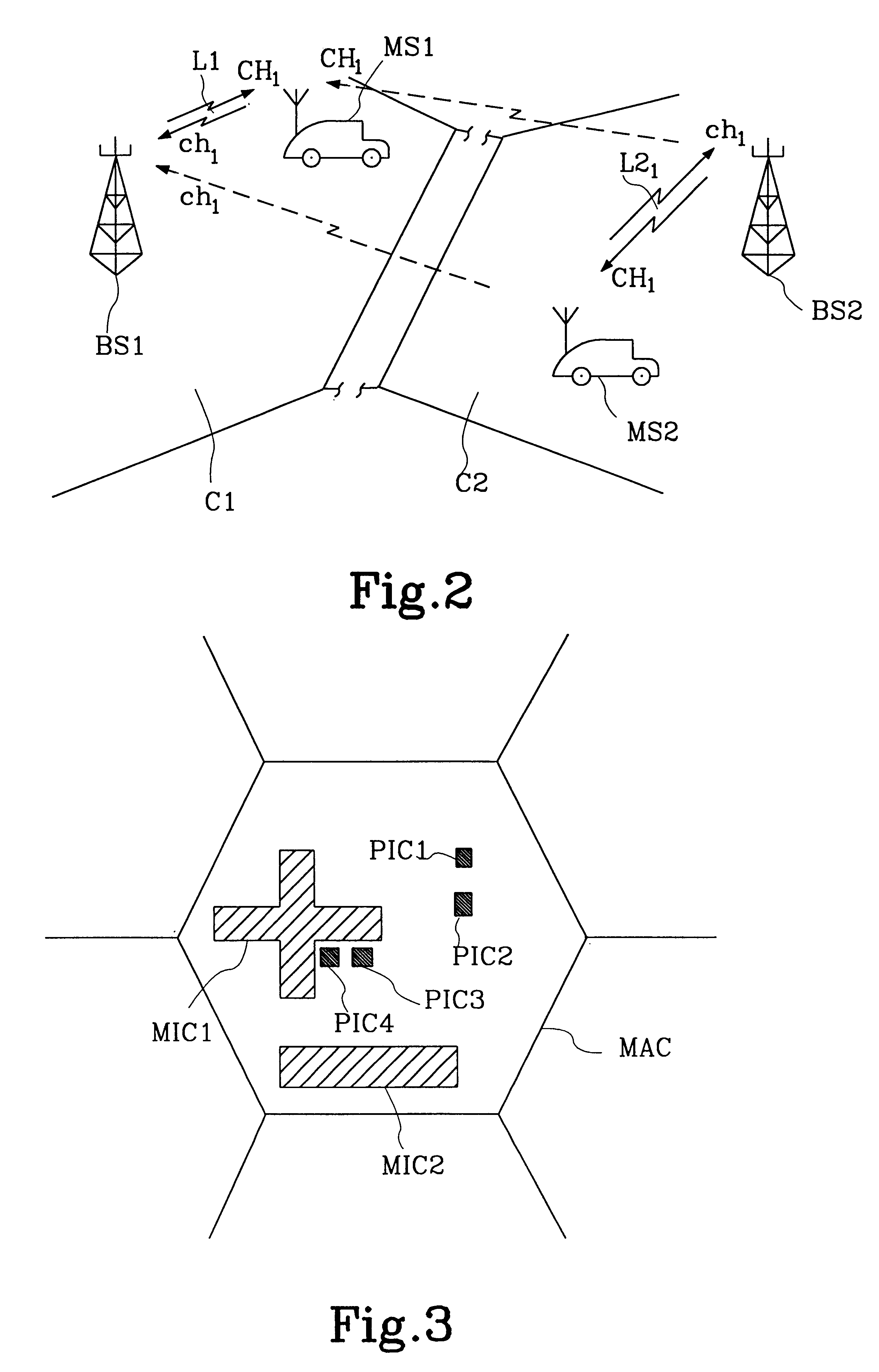Process and device for quality determination
- Summary
- Abstract
- Description
- Claims
- Application Information
AI Technical Summary
Benefits of technology
Problems solved by technology
Method used
Image
Examples
Embodiment Construction
The present invention addresses the problem of how to obtain a measure of the quality of the frequencies or channels in uplink and downlink in a radio communication system.
Another problem is how the quality is to be obtained for frequencies or channels to be used in a downlink without making measurements from the mobile stations.
An additional problem is how to obtain reliable measurements of the quality parameter of both uplink and downlink frequencies and channels in a simple and cost effective manner.
Another problem is how to obtain statistical information concerning the interference situation in a radio communication system.
An additional problem is how to utilize the obtained measurement values of the quality parameter for adaptive frequency or channel selection to the base stations in the radio communication system.
One purpose of the present invention is thus to obtain in a simple and cost-effective manner a measure of the quality in a radio communication system of frequencies o...
PUM
 Login to View More
Login to View More Abstract
Description
Claims
Application Information
 Login to View More
Login to View More - R&D
- Intellectual Property
- Life Sciences
- Materials
- Tech Scout
- Unparalleled Data Quality
- Higher Quality Content
- 60% Fewer Hallucinations
Browse by: Latest US Patents, China's latest patents, Technical Efficacy Thesaurus, Application Domain, Technology Topic, Popular Technical Reports.
© 2025 PatSnap. All rights reserved.Legal|Privacy policy|Modern Slavery Act Transparency Statement|Sitemap|About US| Contact US: help@patsnap.com



